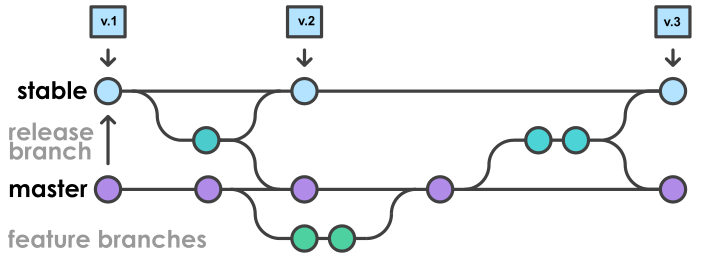-
Notifications
You must be signed in to change notification settings - Fork 30
Process Documentation
In this chapter, the underlying processes, used by WP3 and WP4, are documented.
TODO Moritz will communicate the naming convention of his tool.
The requirements from Subset-26++ have to be linked with the Scade Suite Model Artifacts ("realization traces"), to identify which requirement is implemented where. (implementation coverage)
WP3 wants to create reference links that are not implementation links.
As a modeler, I want to see the requirement(s) associated with a model element, so that I understand what the model is supposed to do.
For the modeling and V&V teams it is important that the modeling repository contains only artifacts that compile without errors (at a minimum). Due to the nature of the tools used (Scade Suite requiring expensive licenses), it is not possible to perform build automation within openETCS.
Therefore, a lightweight, manual process is needed to ensure error-freeness in the repository. The following process is inspired by gitFlow.
One requirement is to impose as little inconveniences to the team as possible. They are currently working on the master branch. We will keep it that way, even though gitFlow works differently. In fact, the main change can be seen as a change in naming convention: (gitFlow)develop becomes (openETCS) master, and (gitFlow) master becomes (openETCS) stable.
- Modelers work on master
- Optionally, they may use features branches that are merged into master upon completion
- On regular intervals (or as needed), the build master will merge the changes from master into stable.
- Once stable is stabilized, the adjustments are merged back into master.
- The stable model is tagged
This is not a git tutorial. We provide command line commands for your convenience, but won't cover their meaning in Detail.
The following image depicts the process. There are two mandatory branches, master and stable. Modelers can also create an arbitrary number of feature branches. The rule of thumb is:
Producers of content should work on the master branch, which should contain the latest greatest, but may be broken.
Consumers of content should use the stable branch, which is guaranteed to work, but may be outdated.

This process is kept concise on purpose. If you need more background, or if you need a more exotic functionality, please consult the gitFlow documentation.
A consumer is interested in always working on a stable model, even if it is slightly outdated. To ensure that a consumer does not accidentally changes the branch, the model shall be used only read-only, by checking it out anonymously, as follows:
Initial Consumer Checkout
git clone -b stable https://github.com/openETCS/modeling.git
To update the model with a new version, use the following command in the model folder:
Update the stable model
git pull
Note: Nothing is stopping you from modifying the model, you just cannot update the repository. If you modify the model (by accident or purpose), you may want to check out a fresh version, as you may get merge conflicts otherwise.
A producer is actively working on the model. All changes should be done on the master branch, no exceptions!
As master is checked out by default, producers can clone without specifying a branch. There are approaches to cloning the repository:
Committers of the openETCS modeling repository can check out the repository using their gitHub identity. This allows them to push changes directly to the repository.
Non-Committers must check out the repository read-only. To push changes, they must issue a pull request.
Check out the development repository as a committer
git clone [email protected]:openETCS/modeling.git
You can work, commit and push changes on this branch as you see fit, but please, don't break it on purpose. :-)
It is recommended to work on a separate branch, if a modification is expected to take more than a day.
Note that it's (almost) impossible to merge binary files. Therefore, use feature branches only for text files.
The build master is responsible for updating the stable branch such that it contains a model with certain quality criteria.
It is up to the modeling teams to define the quality criteria and is explicitly not listed here. At a minimum, stable should not contain compile errors.
The buildmaster performs the following steps:
The buildmaster creates a new release branch:
Create Release Branch
git checkout -b release
Now the buildmaster can ensure that the release branch has the required quality, without affecting other users.
This is also the right time to bump up version numbers, if desired.
Once everything is as desired, the release branch can be merged into stable:
Merge into stable
git checkout stable git merge --no-ff release
It is recommended to create a tag (enter the correct version, of course):
Tag the release
git tag -a v.2
Last, the changes the buildmaster performed need to be merged back into the master branch:
Update master
git checkout master git merge --no-ff release
At this point, the release branch is not needed any more and can be deleted:
Delete Release
git branch -d release